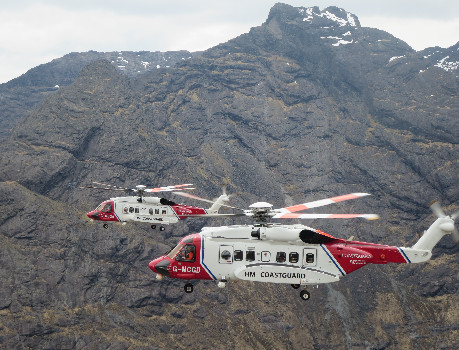Dealing with rescue helicopters
Chances are if you spend enough time in the hills, you will be directly or indirectly involved in an incident which involves the use of a Search & Rescue (SAR) helicopter.
Her Majestyís Coastguard are responsible for the UKís search and rescue helicopter service, operated on their behalf by Bristow Helicopters Ltd. Under direction from the Aeronautical Rescue Coordination Centre (ARCC), crews will respond to both maritime and mainland SAR rescues, working closely with Mountain Rescue Teams.
Scotland is home to four of the ten Coastguard helicopter bases - Inverness, Prestwick, Stornoway and Sumburgh Ė all using brand new state-of-the-art helicopters.
The Scottish Air Ambulance Service has helicopters based at Glasgow and Inverness, with a third due to be added at Perth, which are also likely to be seen in the hills, but are not winch-equipped to allow the same rescue capabilities as the Coastguard helicopters.

It goes without saying that helicopters can be dangerous if correct
protocol is either unknown or not carried out. While helicopter crews
will take care to minimise risk to all concerned, helicopter
rescue situations can be dealt with more quickly and smoothly if there
is a greater awareness of considerations among those involved.
We have therefore pulled together a simple list of Ďdoís and donítsí, for awareness in the event that you find yourself in the vicinity of, or needing assistance from a Coastguard helicopter.
When a helicopter moves in to winch or land there are a few points to remember
The crew will often operate with night-vision goggles (NVGs) when dark, giving an improved and enhanced night flying capability.
And above all, always do as directed by the crew.